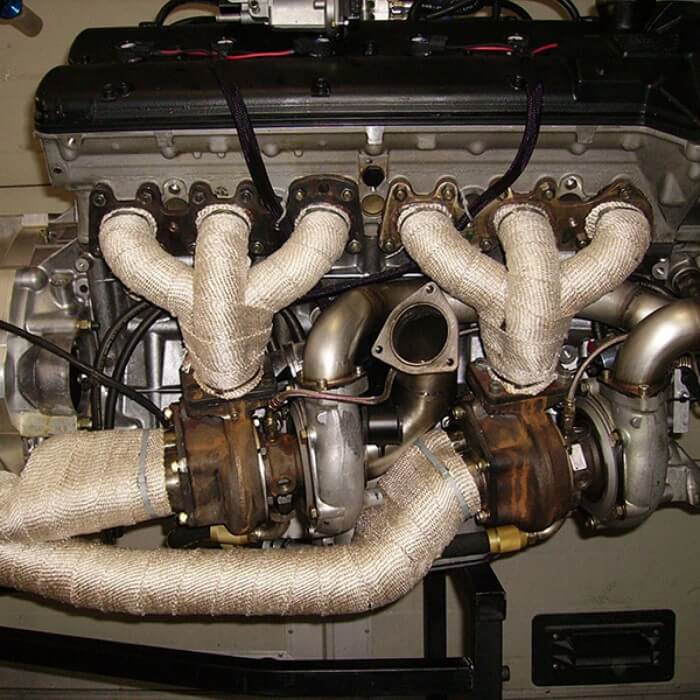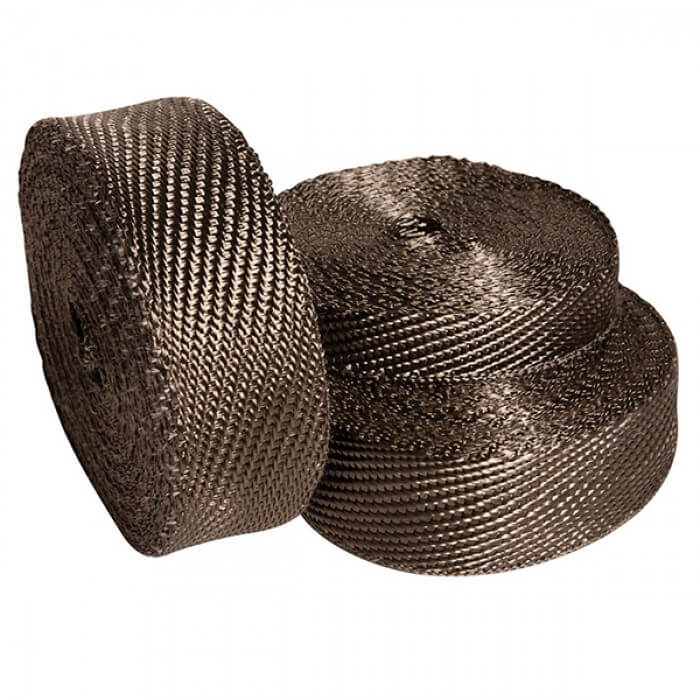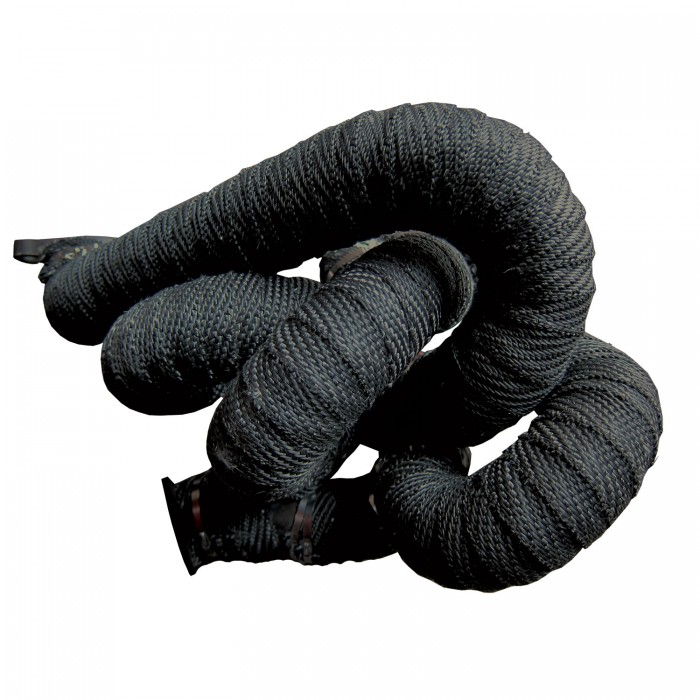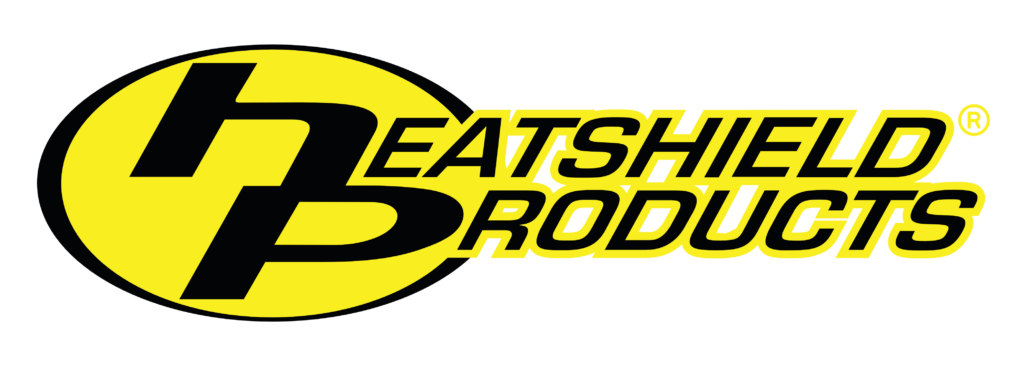The Truth About Quality Header Wraps
Think all exhaust heat wrap tape and header wraps are the same? The correct answer is an emphatic “NO!” They might look the same, but exhaust wrap myths are abundant. The truth is that the design of heat shield material can differ greatly between brands. This means that taking the cheap route when choosing an exhaust wrap can often lead to nightmares, not to mention a waste of valuable money and time. Heatshield Products’ co-owner, Steve Heye, has seen one too many cheap heat wrap products go wrong during his career in the thermal-barrier industry. In this blog, he shares some of his experience to help you choose the best exhaust wrap or header wrap for your vehicle.
“There is a lot of BS out there,” Steve explained. “Some companies mislead customers with their temperature parameters, so people blow a gasket when their advertised 2,000-degrees F wrap gets brittle and falls apart. The reality is, Heatshield Products is the only company with a truly 2,000-degrees F capable automotive exhaust wrap: our Inferno Wrap™. The Inferno Wrap™ is recommended for turbo, supercharged, and racing applications where exceptionally high exhaust gas temperatures are seen. It isn’t the prettiest exhaust wrap around, but it’s the only one around that can get the job done above 1,200-degrees F.”

Inferno Header Wrap™ designed continuous temperature of 2,000-degrees F. Inferno Header Wrap™ can withstand intermittent temperatures of 3,000-degrees F, making it the only wrap to use on your forced-induction or racing application.
Not only do cheaper header heat wraps fail to stand up to these temperatures, but exposure to normal underhood elements, as well as to exhaust heat, may cause cheaper wraps to literally start disintegrating.
“We get a lot of customers complaining about supposed 1,800-degrees F volcanic rock exhaust wrap from other companies getting brittle and falling apart. It’s because they were misled to believe it could take more than 1,200-degrees F, which only basalt [volcanic rock] fiber can handle,” Steve said. “Those other exhaust wraps might look really cool but if they can’t take the heat, they don’t belong on your ride.”

Wraps that can take the heat? Heatshield Products’ Lava Exhaust Wrap™ (pictured above). Lava Exhaust Wrap™ is 25-percent stronger than fiberglass wraps, giving it a prolonged life. Heatshield Products Lava Exhaust Wrap™ withstands continuous temperatures of 1,200-degrees F and intermittent 2,000-degrees F.
Similarly, Heatshield Products’ Cobra Skin™ Exhaust Wrap (pictured below) uses the same HPTC coating as its Premium Exhaust Wraps and features a special weave that makes it easier to wrap around bends in pipes while creating a carbon-fiber appearance after it has been installed. Cobra Skin™ Exhaust Wrap can sustain up to 1,350-degrees F continuously and 2000-degrees F intermittently. Unlike other, cheaper header wraps, Cobra Skin™ holds up to multiple high temperature heat cycles. Cheaper products will become weak and brittle at 1,000- degrees F. Heatshield Products’ best exhaust wrap lasts past this mark for a durable, reliable wrap that will keep your performance going.
Unlike other companies, Heatshield Products tests its header wraps in the real world. The numbers listed on each exhaust wrap are a real-world-tested rating. Beware of inflated temperature claims and ratings of similar basalt/volcanic rock products. Let’s break down the common mistakes that occur when choosing an exhaust wrap or header wrap, and how they can sometimes lead to a dangerous waste of money.
Imported Exhaust and Header Wraps
“It’s important to look at where the exhaust wrap you’re buying was made, and stick with an American-made exhaust wrap whenever possible. That cheap roll of header wrap might be a great deal on eBay, but it can potentially cause serious health problems. A lot of the cheap, imported header wraps will use filler fibers (ceramic and rayon, to name a few) in their construction. While ceramic fibers sound great, they can be extremely dangerous in an exhaust wrap. Ceramic fibers are shorter than the non-breathable e-glass, basalt, or silica fibers Heatshield Products uses. The short fibers used to make cheap wraps and exhaust wrap tapes are susceptible to fraying and easily inhaled, which poses a danger to your lungs. In addition, there are so many variations and grades of these fibers they might have a lower temperature threshold than fiberglass fibers.”
Exhaust Wrap Sprays
“We don’t make them, we don’t sell them, we don’t necessarily believe in them outside of cosmetic motivations. If you have to buy a silicone spray to ‘seal’ your header wrap for proper thermal-barrier function and give it reasonable longevity, you have the wrong wrap,” Steve noted. “You are better off starting with a higher quality exhaust wrap tape which already has a superior coating manufactured into the wrap. If people must spray for color matching or to try and minimize color, they should really do themselves a favor and go buy some high-quality exhaust paint like VHT. Not only will this cost less than rebadged silicone exhaust wrap and spray sold by other companies, but it will actually take more heat and last longer.”

Know Your Temperatures
Lastly, ensure the exhaust or header wrap you’re selecting can handle the heat of what you’re installing it on. Measure the temperatures coming off your exhaust before you buy an exhaust wrap. Match the measurement you take to the operating temperature of the exhaust wrap you’re considering. At Heatshield Products, finding those numbers is easy. We boldly and accurately state our operating and peak temperatures on all of our header wraps and heat wrap products. Not all manufacturers do!
Don’t let the desire for a cool look overrule the performance of your wrap. Make sure you get the right wrap for your measured exhaust temperatures so you only have to do the job once.

